'Smoking gun' evidence for theory that Saturn's collapsing magnetic tail causes auroras
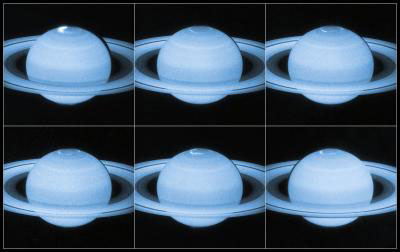 Saturn's auroras are caused by the same phenomenon which leads to dramatic auroral displays on Earth.
Saturn's auroras are caused by the same phenomenon which leads to dramatic auroral displays on Earth.
May 19th, 2014
Read more
 Subscribe to our Space Exploration News feed
Subscribe to our Space Exploration News feed
 Saturn's auroras are caused by the same phenomenon which leads to dramatic auroral displays on Earth.
Saturn's auroras are caused by the same phenomenon which leads to dramatic auroral displays on Earth.
May 19th, 2014
Read more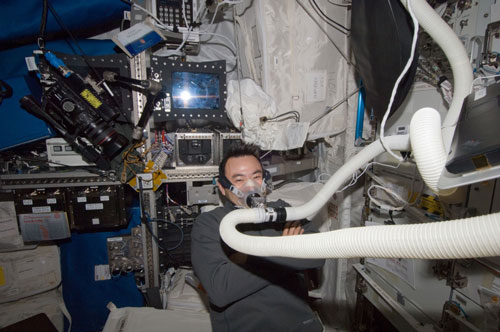 The splashdown of SpaceX's Dragon spacecraft on May 18 concludes the company's third contracted resupply mission to the International Space Station, assisting scientists who have investigations returning to Earth complete their analyses.
The splashdown of SpaceX's Dragon spacecraft on May 18 concludes the company's third contracted resupply mission to the International Space Station, assisting scientists who have investigations returning to Earth complete their analyses.
May 18th, 2014
Read more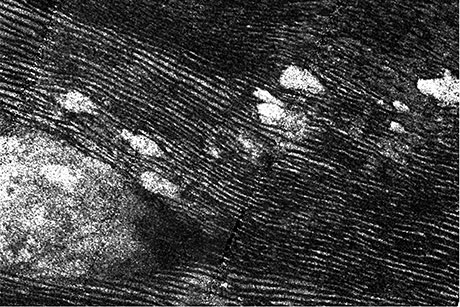 The dunes of Titan tell cosmic tales. A Cornell senior and researchers have narrowed theories on why the hydrocarbon dunes - think plastic - on Saturn's largest moon are oriented in an unexpected direction, a solar system eccentricity that has puzzled space scientists.
The dunes of Titan tell cosmic tales. A Cornell senior and researchers have narrowed theories on why the hydrocarbon dunes - think plastic - on Saturn's largest moon are oriented in an unexpected direction, a solar system eccentricity that has puzzled space scientists.
May 15th, 2014
Read more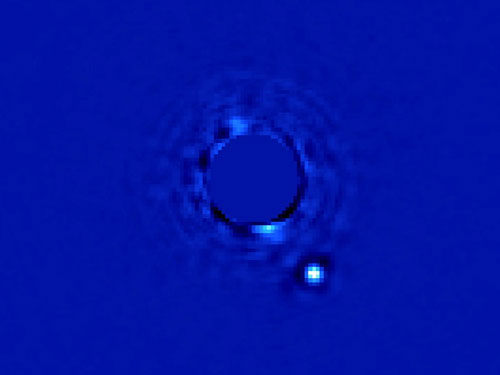 Using one of the world's largest telescopes, a Lawrence Livermore team and international collaborators have tracked the orbit of a planet at least four times the size of Jupiter.
Using one of the world's largest telescopes, a Lawrence Livermore team and international collaborators have tracked the orbit of a planet at least four times the size of Jupiter.
May 15th, 2014
Read more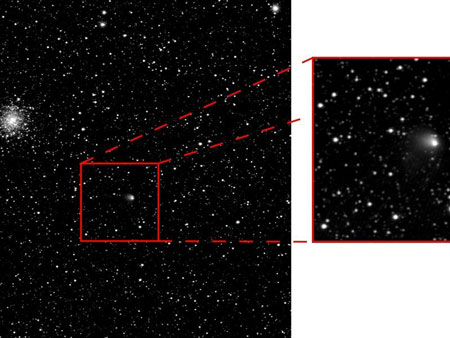 The scientific imaging system OSIRIS on board ESA's Rosetta spacecraft witnesses the awakening of the mission's target comet.
The scientific imaging system OSIRIS on board ESA's Rosetta spacecraft witnesses the awakening of the mission's target comet.
May 15th, 2014
Read more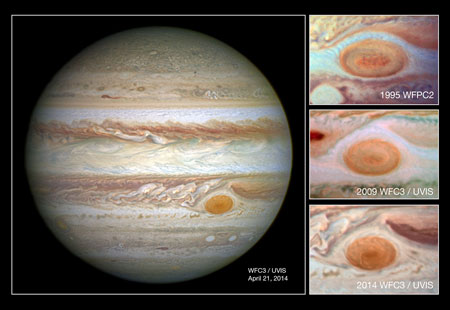 Jupiter's trademark Great Red Spot - a swirling storm feature larger than Earth - is shrinking. This downsizing, which is changing the shape of the spot from an oval into a circle, has been known about since the 1930s, but now these striking new Hubble Space Telescope images capture the spot at a smaller size than ever before.
Jupiter's trademark Great Red Spot - a swirling storm feature larger than Earth - is shrinking. This downsizing, which is changing the shape of the spot from an oval into a circle, has been known about since the 1930s, but now these striking new Hubble Space Telescope images capture the spot at a smaller size than ever before.
May 15th, 2014
Read moreA new model accounting for the loss of stability in supernova explosions sheds some new light on this phenomenon.
May 15th, 2014
Read more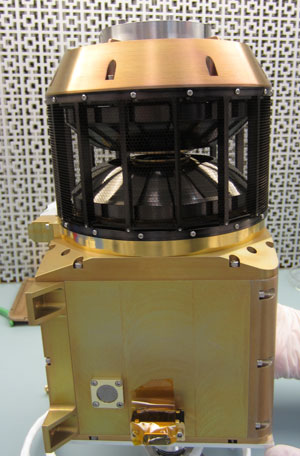 This past November, NASA launched the Mars Atmosphere and Volatile Evolution (MAVEN) mission in the hope of understanding how and why the planet has been losing its atmosphere over billions of years.
This past November, NASA launched the Mars Atmosphere and Volatile Evolution (MAVEN) mission in the hope of understanding how and why the planet has been losing its atmosphere over billions of years.
May 14th, 2014
Read more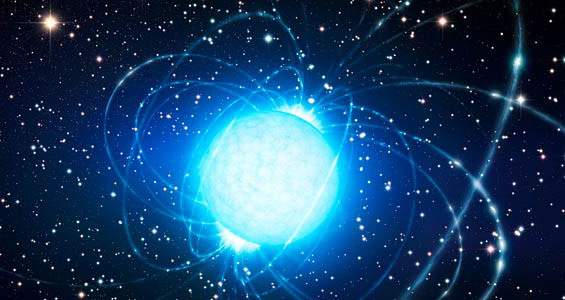 Magnetars are the super-dense remnants of supernova explosions. They are the strongest magnets known in the Universe - millions of times more powerful than the strongest magnets on Earth. A team of astronomers now believe they've found the partner star of a magnetar for the first time. This discovery helps to explain how magnetars form and why this particular star didn't collapse into a black hole as astronomers would expect.
Magnetars are the super-dense remnants of supernova explosions. They are the strongest magnets known in the Universe - millions of times more powerful than the strongest magnets on Earth. A team of astronomers now believe they've found the partner star of a magnetar for the first time. This discovery helps to explain how magnetars form and why this particular star didn't collapse into a black hole as astronomers would expect.
May 14th, 2014
Read more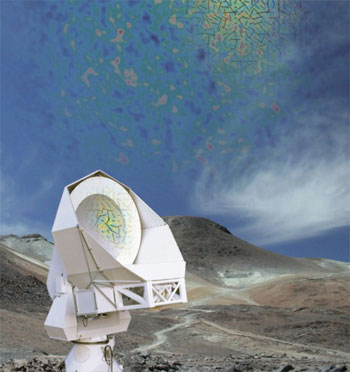 Astrophysicists have measured the minute gravitational distortions in polarized radiation from the early universe and discovered that these ancient microwaves can provide an important cosmological test of Einstein's theory of general relativity.
Astrophysicists have measured the minute gravitational distortions in polarized radiation from the early universe and discovered that these ancient microwaves can provide an important cosmological test of Einstein's theory of general relativity.
May 13th, 2014
Read more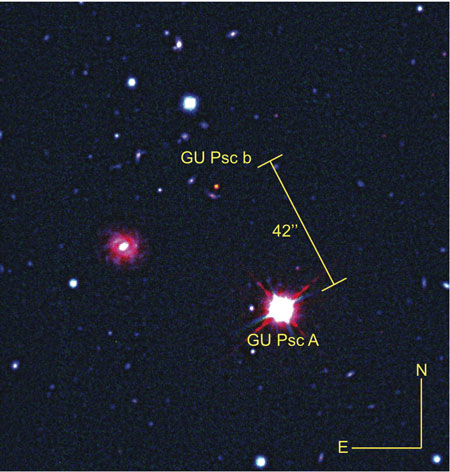 A gas giant has been added to the short list of exoplanets discovered through direct imaging. It is located around GU Psc, a star three times less massive than the Sun and located in the constellation Pisces.
A gas giant has been added to the short list of exoplanets discovered through direct imaging. It is located around GU Psc, a star three times less massive than the Sun and located in the constellation Pisces.
May 13th, 2014
Read more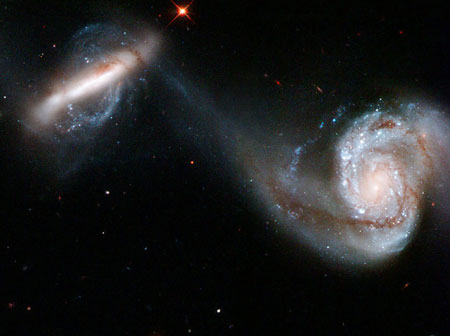 The first galaxies evolved only a few hundred million years after the Big Bang. But why do they have such a great variety of shapes and structures? How did the universe evolve as a whole? Two German-Chinese Partner Groups are using observations and simulations to investigate how the early universe evolved
The first galaxies evolved only a few hundred million years after the Big Bang. But why do they have such a great variety of shapes and structures? How did the universe evolve as a whole? Two German-Chinese Partner Groups are using observations and simulations to investigate how the early universe evolved
May 13th, 2014
Read more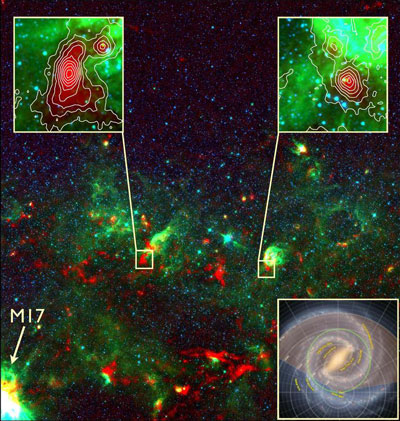 ATLASGAL is a survey of the Galactic Plane at a wavelength of 0.87 mm. It has revealed an unprecedented number of cold dense clumps of gas and dust as the cradles of massive stars, thus providing a complete view of their birthplaces in the Milky Way.
ATLASGAL is a survey of the Galactic Plane at a wavelength of 0.87 mm. It has revealed an unprecedented number of cold dense clumps of gas and dust as the cradles of massive stars, thus providing a complete view of their birthplaces in the Milky Way.
May 13th, 2014
Read more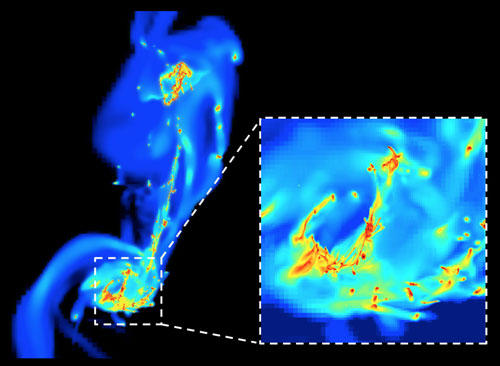 Using state of the art computer simulations, a team of French astrophysicists have for the first time explained a long standing mystery: why surges of star formation (so called 'starbursts') take place when galaxies collide.
Using state of the art computer simulations, a team of French astrophysicists have for the first time explained a long standing mystery: why surges of star formation (so called 'starbursts') take place when galaxies collide.
May 12th, 2014
Read more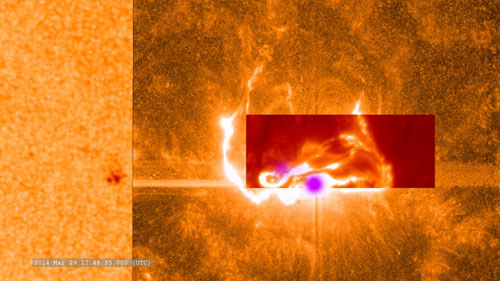 On March 29, 2014, an X-class flare erupted from the right side of the sun - and vaulted into history as the best-observed flare of all time. The flare was witnessed by four different NASA spacecraft and one ground-based observatory - three of which had been fortuitously focused in on the correct spot as programmed into their viewing schedule a full day in advance.
On March 29, 2014, an X-class flare erupted from the right side of the sun - and vaulted into history as the best-observed flare of all time. The flare was witnessed by four different NASA spacecraft and one ground-based observatory - three of which had been fortuitously focused in on the correct spot as programmed into their viewing schedule a full day in advance.
May 8th, 2014
Read more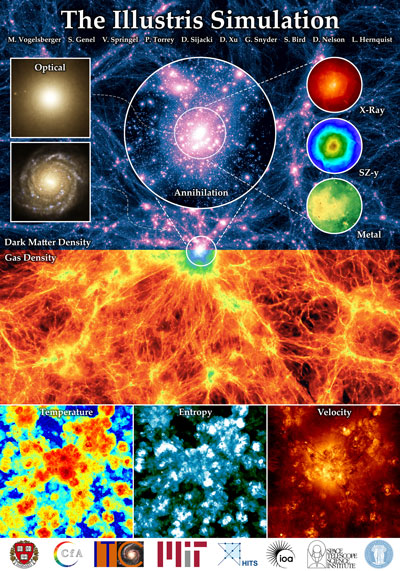 A new computer simulation shows the formation of galaxies with unprecedented precision, allowing astrophysicists to indirectly confirm the standard model of cosmology.
A new computer simulation shows the formation of galaxies with unprecedented precision, allowing astrophysicists to indirectly confirm the standard model of cosmology.
May 7th, 2014
Read more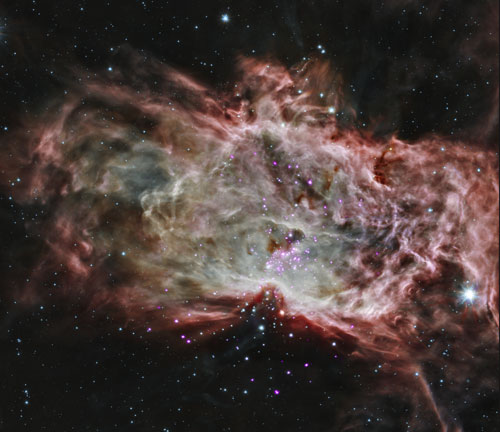 Using data from NASA's Chandra X-ray Observatory and infrared telescopes, astronomers have made an important advance in the understanding of how clusters of stars come into being.
Using data from NASA's Chandra X-ray Observatory and infrared telescopes, astronomers have made an important advance in the understanding of how clusters of stars come into being.
May 7th, 2014
Read more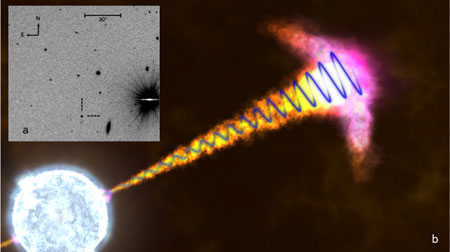 On 24 October 2012 observatories across the world were alerted about a huge stellar explosion, the GRB121024A. The data obtained on that explosion, which took place about 11,000 million years ago, have made it possible to reconstruct how a black hole is formed.
On 24 October 2012 observatories across the world were alerted about a huge stellar explosion, the GRB121024A. The data obtained on that explosion, which took place about 11,000 million years ago, have made it possible to reconstruct how a black hole is formed.
May 7th, 2014
Read more